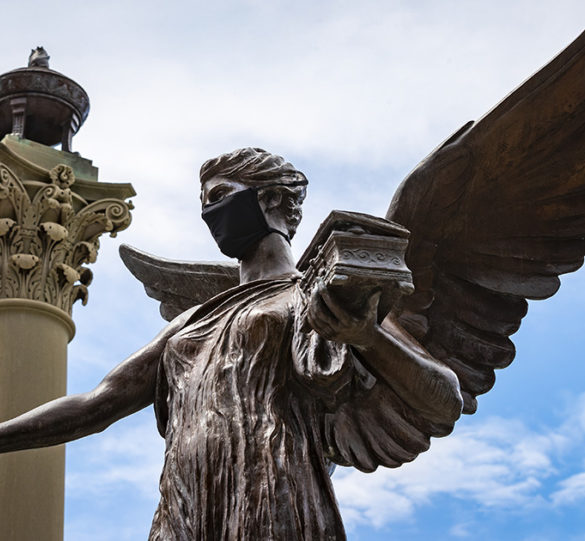On-campus testing, changing the regular sanitizing schedules, and contact tracing are some of the strategies Ball State University has taken to combat the coronavirus.
March 2020: a month full of unprecedented times, a month where college campuses were vacated, spring breaks were canceled, and graduation ceremonies postponed. Birthdays consisted of drive-by parties rather than spending the day with friends, classes online rather than in large lecture halls. The coronavirus restrictions raised many questions amongst students, staff, and faculty.
When can students come back?
What does this mean for the 2020 fall semester and each semester to follow?
President Geoffrey Mearns detailed the precautions that the university has had to take, ranging from contact tracing in the classrooms to making sure that the residence halls are following guidelines.
“The first factor we have to look at is what guidance or directives we’ve received from either the state or the county. We also look at the positivity rate out in the area, either here in Delaware County or in the state,” says Mearns.
He says the university uses these factors to decide what precautions to take in order to keep students and staff safe and keep the university open for classes. Ball State also looks at the capacity that the health center has to test and treat students and staff with COVID-19, or where to keep quarantined individuals.
“We assess those factors every day, and we share that data with a team of public health and medical experts and seek their guidance as to whether or not we need to adjust or change any of our protocols,” says Mearns.
In addition to contact tracing and monitoring the amount of testing on campus, the university has had to make changes with sanitation and cleaning the residence halls, classrooms, and dining halls.
The custodial staff is in charge of cleaning and sanitizing all campus buildings, with 86 employees spread across three shifts, cleaning academic buildings that span 3.2 million square feet.
“The emphasis with our custodial staff, those 86 people, is sanitizing, sanitizing, sanitizing,” says James Lowe, associate vice president for facilities planning and management.
Sanitizing these buildings on campus means cleaning the smallest and most-touched surfaces like handrails, doorknobs, and elevator buttons. In this process, the bigger areas are also affected and taken care of, more than they would if the custodial staff solely focused on the bigger areas, according to Lowe.
The university has also made changes within the bathrooms, moving the trash cans closer to the doors, so that people can use paper towels from drying their hands to open the door rather than touching the door and exposing it to more bacteria. The buses are also sanitized every hour, with at least one not running at all times.
“We have two people that are in charge of helping us sanitize the buses. They do a combination of fogging spray and wipe down to try to keep the buses sanitized,” says Lowe. “We’ve done a number of things to try to keep the shuttle buses safe for everyone that chooses to ride them.”
Lowe commends the custodial staff on the effort they’ve put into keeping the university up and running this semester and the way they’ve been able to persevere through difficult times. Mearns feels similarly about the students and staff.
“I’m very proud of the way our employees, our faculty, our staff, and students responded,” says Mearns, “There was a significant increase in positive cases primarily among our students in the first two weeks of classes, but what happened in response to that was very impressive in my opinion.”




